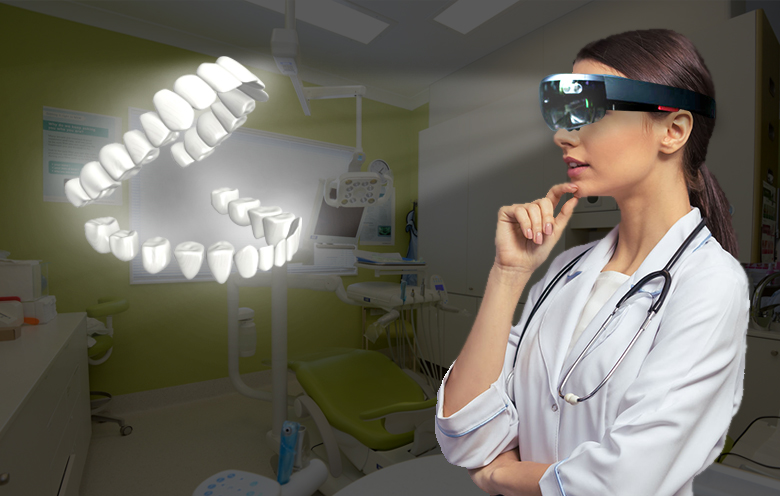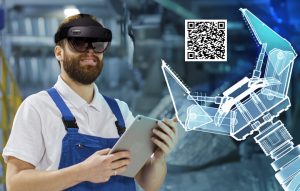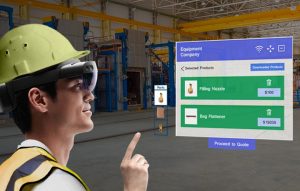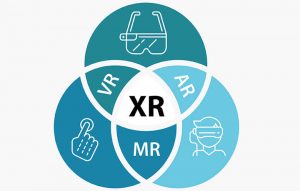Immersive technologies have gained a lot of hype in recent years due to some of the remarkable developments in the digital space. Also, within the immersive technologies umbrella, augmented reality (AR) and virtual reality (VR) are largely popular. Many have perceived these technologies to be limited to the world of games and entertainment. However, things are changing and we are now moving forward into extended reality (XR) which is accelerating the use of immersive technologies for healthcare consumers. Interestingly, extended reality in the healthcare sector has already begun to realize its full potential and in this blog post, we will walk through some of the most interesting use cases of XR in the healthcare industry.
Extended Reality – What is it?
What if you could explore human anatomy virtually? Imagine a life-size 3D model appearing right in front of you where you can simply walk to it and interact with it. That’s exactly what XR does, creating virtual experiences. XR is a scientific visualization technology, that can tackle experimentally areas that are difficult to be studied in real life. As interesting as it sounds, XR is a wide range of experiences that blend the virtual and physical world, sometimes making it difficult to distinguish between the two.
XR experiences involve using devices that are controlled by voice, gestures, or eye movements. In brief, XR is an umbrella term covering the virtual reality (VR), augmented reality (AR), and mixed reality (MR) technologies.
XR’s potential in healthcare
The use of XR in healthcare is opening up new opportunities for medical practitioners and holds a promising future, especially for modern healthcare organizations. XR solutions hold the potential to assist surgeons in the operation theatre by saving their time in seeking relevant information for critical decisions. Some of the major uses of XR in healthcare include, training new medical practitioners and providing them a deeper understanding of disease or illness to patients.
Let’s look into some healthcare-centric use cases:
1. Help to understand patient’s condition better and relieve their pain
XR can help relieve a patient’s pain as immersing them in experience during their treatment distracts them from what’s going on. For instance, in a university in Canada, students developed a VR-based game that would keep cancer patients occupied during chemotherapy and thus, distract them from their pain.
This would lead doctors and healthcare providers to better understand their patients by engaging them in experiences that allow care-givers to walk in their patients’ shoes and see what they experience. This can significantly boost interpersonal trust in the doctor-patient treatment relationship.
2. Enable to build surgery simulator for training medical practitioners
Immersive technologies also have the potential to allow doctors to conduct surgery simulations. A surgery simulator can be created with the help of extended reality for the purpose of training medical practitioners. Using a surgery simulator, the need of a patient, cadaver or animal is greatly reduced.
3. Prepare surgeons before actual surgeries
Using XR, the opportunities are endless in healthcare. Here are a few uses which are aimed towards surgical planning and training:
- 3D replicas can be generated based on patient scans that can further allow surgeons to study and collaborate with their team on surgical tactics. Moreover, an XR immersive headset can be used as a device to showcase the cut, draw and measure tools and to develop a real procedure of operation.
- Additionally, an XR-based immersive interactive platform can be created for healthcare providers where multiple surgeons can collaborate for training lessons, discussions and more.
- Simulation-based applications can also be built for surgeons to practice and sharpen their skills.
An XR application can include realistic vibration patterns, allowing the surgeon to feel as if he/she is holding actual tools. Such an immersive application can be a lifelike platform to study surgeries when combined with the power of VR.
4. Conduct educational training for medical students
Extended reality in medical education plays a crucial role in training and teaching. XR-based apps can be created for educational purposes for doctors as well as medical students as it can help them to observe intricate details which are anatomically accurate models of a human body. This helps them to learn about different systems and practice their surgical skills.
5. Diagnose health conditions of patients
What if doctors could scan a patient’s body and straight away point out any health problems? As intriguing as it sounds, it’s now possible with an XR application. A set of immersive technologies can be brought together using 3D models to detect patient’s illnesses. Certain health problems like tumors or broken bones and others can also be detected using such applications. Moreover, images from the application can be used to show patients a step-by-step process of their potential surgery.
Take away
Extended reality technology is undoubtedly creating numerous opportunities for healthcare organizations. From medical devices and pharmaceutical manufacturers to hospital systems and insurers, healthcare service providers are looking for ways to shape the future of the healthcare industry. If you are among them, then reach out to us and see how our immersive technology solutions can help you enhance both productivity as well as experience.







